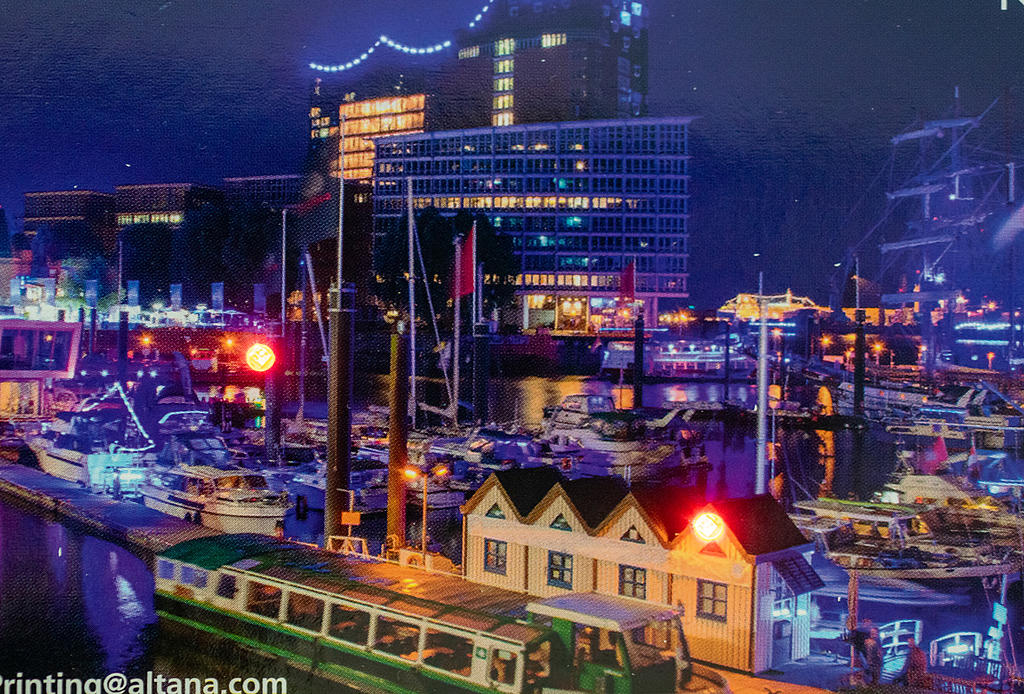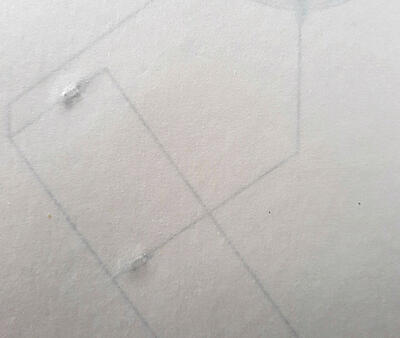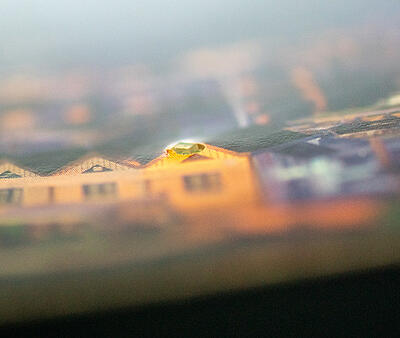Printed electronics is more relevant than ever. One often envisions complex circuits and electronic devices which can be quasi printed.
Our new NFC postcard with three activatable LEDs shows that “printed electronics” doesn’t have to be so complicated.
“Keep it simple" was the idea in order to show what can be accomplished with “printed electronics“ in combination with graphic printing in only a few steps. This is how it all began. It should be something that people can hold in their hand, something for testing and something that lights up if possible. It should be as simple as possible from the standpoint of both printing technology and the printed circuit concept, but effectively designed. And so, the idea of the postcard emerged.
The Hamburg harbour, with a view to the Elbphilharmonie at night, serves as the motif. The time exposure gives the water a smooth surface, the few clouds soften, and the lights are particularly emphasised. The front side, i.e., the motif, was printed on a postcard carton in four colours (CMYK) in offset and refined with a UV gloss varnish.

Finally, three holes were punched at the positions where the LEDs are to be placed. And then the printed conductive tracks and NFC antenna are printed to a laminated film (Image 1).
NFC: “The Near Field Communication is an RFID technology-based international communications standard for the contact-free exchange of data by electromagnetic induction via loosely coupled coils over short distances of a few centimetres. It has a maximum data transmission rate of 424 kbit/s.“
The printing of the printed conductive tracks takes place in screen printing with conductive silver pastes from ELANTAS. For finer lines, our Bectron® CP 6669 solvent-based or our Bectron® CP 6671 UV- cross-linking are the pastes of choice. Bectron® CP 6669 is ideally dried at 120°C for 5 minutes. The UV variant is subjected to final drying with at least 600mJ/cm2 and further drying in an oven at 100°C for 2 minutes in order to obtain the best possible conductivity.
In this case, the LEDs were placed manually on the laminated film and fixed with a conductive adhesive, e.g., our own Bectron® CG 5660.
“The 3 LEDs are not thicker than the carton itself and are therefore nearly invisible when switched off.“
For the lamination to exactly match the printed circuit and the mounted LEDs over the punched holes, the laminated film is affixed with slight overhang and subsequently the edge is cut away to match the postcard format (Image 2).


In a possible further development, a NFC chip could also be integrated. This would enable the storage of data and their transmission to websites, for example. The integration of a GPS localisation and/or a temperature logger is also possible.
Swiping then with an NFC-reading device, such as a current smartphone, contact-free over the NFC antenna causes the LEDs to begin flashing or to light up. The intensity of the lighting or flashing depends upon the transmission frequency of the NFC reader. Apart from the smartphone, no further energy source is required.
For questions about the choice of appropriate materials or application-specific topics, please feel free to contact us directly under advancedPrinting@altana.com
Learn more about our portfolio for printed electronics.